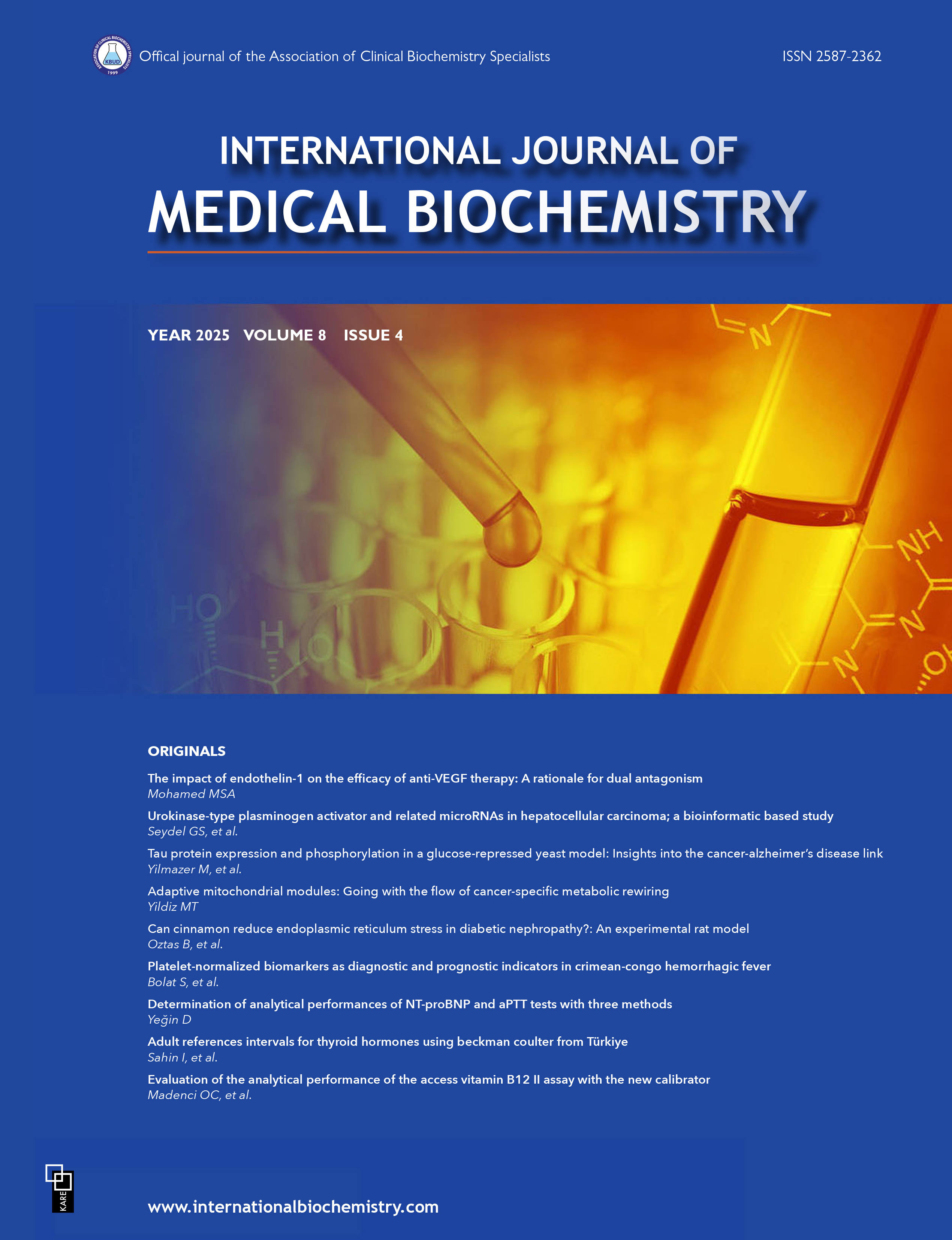Evaluation of ethanol test analysis: The two years experience
Gamze Gok1, Turan Turhan21Department of Medical Biochemistry Laboratory, University of Health Sciences, Ankara Bilkent City Hospital, Ankara, Türkiye2Department of Medical Biochemistry, Health Application and Research Center, University of Health Sciences, Ankara Bilkent City Hospital, Ankara, Türkiye
INTRODUCTION: Compounds with hydroxyl (-OH) attached to the carbon atom in their structure are generally defined as alcohols. People have been producing, consuming, and enjoying alcohol for a very long time. The prevalence of alcohol use disorder in the world is 5.1%. Alcohol toxicity can be life-threatening, and blood alcohol levels must be measured.
METHODS: The 19568 ethanol analysis results were included in this study, performed between 01.01.2021 and
31.12.2022, and were obtained from Ankara Bilkent City Hospital's laboratory information system. Serum ethanol levels <10 mg/dL were accepted as negative. Ethanol analysis results according to positive serum ethanol levels were designed as follows; <10 mg/dL, between 10 mg/dL and ≤30 mg/dl, between 30 mg/dl> and ≤50 mg/dl, between 50 mg/dl> and ≤100 mg/dl, and above 100 mg/dL. Ethanol analysis results according to age were designed as follows ≤10 years, 1120 years, 2130 years, 3140 years, 4150 years, 5160 years, and above 60 years. The ethanol analyses were performed by Atellica Chemistry- XPT ® (Siemens Healthineers, Erlangen, Germany) device.
RESULTS: This study included a total of 19568 ethanol analysis results. The number of females and males was as follows:
5595 (%28.3), 13973 (%71.4) Ethanol positivity was higher in males 2735 (%76.5) than in females 839 (%23.5) (p<0.001). The results of the males were higher in each group (p<0.001) when evaluating the ethanol intervals among genders. When the ethanol intervals among age intervals were analyzed, the group aged between 21 to 30 years had the highest number while the group aged between 0 to 10 years had the least number (p<0.001).
DISCUSSION AND CONCLUSION: Alcohol use is stated as a public health problem for the whole world. Our study, which evaluates alcohol analysis results according to gender, different age groups, and different ethanol intervals, may be helpful for future studies.
Manuscript Language: English







